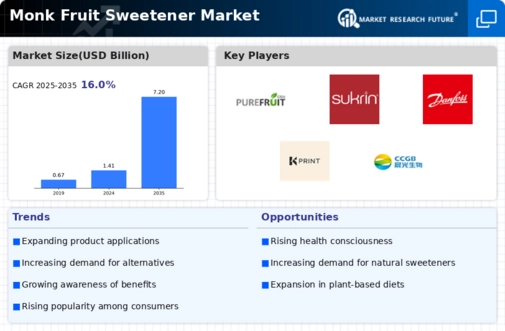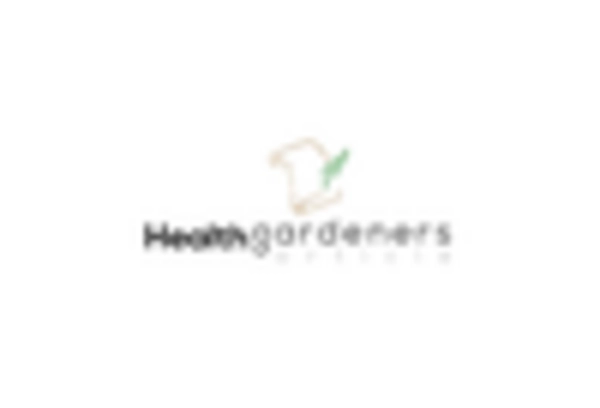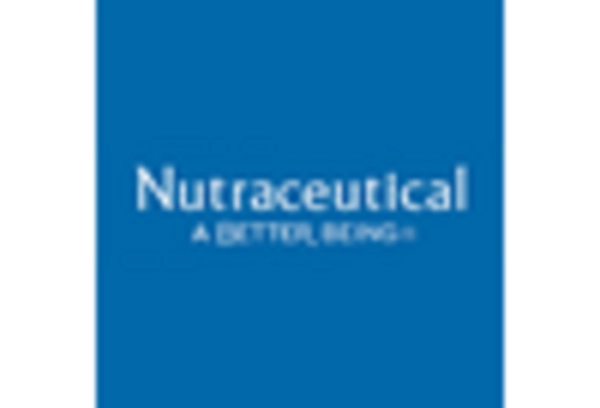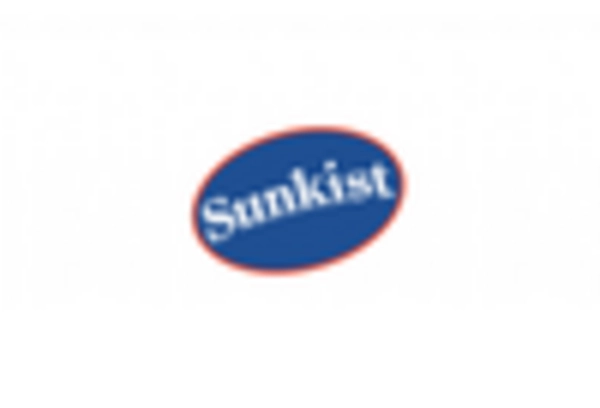Innovation in Product Development
The Monk Fruit Sweetener Market is characterized by continuous innovation in product development, which is driving market growth. Manufacturers are increasingly exploring new formulations and applications for monk fruit sweetener, ranging from beverages to baked goods. This innovation is crucial as it allows companies to cater to diverse consumer preferences and dietary needs. Additionally, market data suggests that the introduction of innovative monk fruit sweetener products could lead to a market expansion, with projections indicating a potential increase in market size by 30% over the next few years. This trend underscores the importance of innovation in maintaining competitiveness within the monk fruit sweetener market.
Growing Vegan and Plant-Based Trends
The Monk Fruit Sweetener Market is benefiting from the growing trends towards veganism and plant-based diets. As more consumers adopt these lifestyles, there is a heightened demand for sweeteners that align with their dietary choices. Monk fruit sweetener, being plant-derived, fits seamlessly into vegan and plant-based products, making it an attractive option for manufacturers. This trend is further supported by Market Research Future suggesting that the plant-based food market is projected to reach 74 billion dollars by 2027. Consequently, the monk fruit sweetener is likely to see increased adoption in various food products catering to this demographic.
Increased Use in Dietary Supplements
The Monk Fruit Sweetener Market is witnessing a surge in the incorporation of monk fruit sweetener into dietary supplements. This trend is largely attributed to the rising popularity of health and wellness products among consumers. As individuals increasingly prioritize their health, they are gravitating towards supplements that are low in calories and sugar. Monk fruit sweetener, with its natural sweetness and zero-calorie profile, aligns perfectly with these consumer preferences. Furthermore, the dietary supplement market is expected to reach a valuation of over 200 billion dollars by 2025, indicating a substantial opportunity for monk fruit sweetener to penetrate this lucrative segment.
Rising Demand for Natural Sweeteners
The Monk Fruit Sweetener Market is experiencing a notable increase in demand for natural sweeteners as consumers become more health-conscious. This shift is largely driven by a growing awareness of the adverse effects of artificial sweeteners and sugar on health. As a result, many consumers are actively seeking alternatives that offer sweetness without the associated health risks. The Monk Fruit Sweetener, derived from the monk fruit, is perceived as a healthier option due to its natural origin and zero-calorie content. Market data indicates that the demand for natural sweeteners is projected to grow at a compound annual growth rate of approximately 5.5% over the next five years, further solidifying the position of monk fruit sweetener in the market.
Regulatory Support for Natural Ingredients
The Monk Fruit Sweetener Market is experiencing favorable regulatory support for natural ingredients, which is enhancing the market landscape. Governments and health organizations are increasingly promoting the use of natural sweeteners as part of public health initiatives aimed at reducing sugar consumption. This regulatory backing not only encourages manufacturers to adopt monk fruit sweetener in their products but also instills consumer confidence in its safety and efficacy. As regulations continue to evolve, the monk fruit sweetener is likely to gain further traction in the market, potentially leading to an increase in its market share.


















Leave a Comment